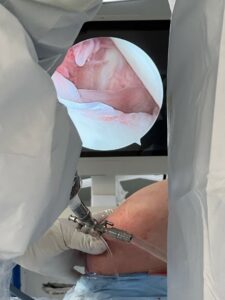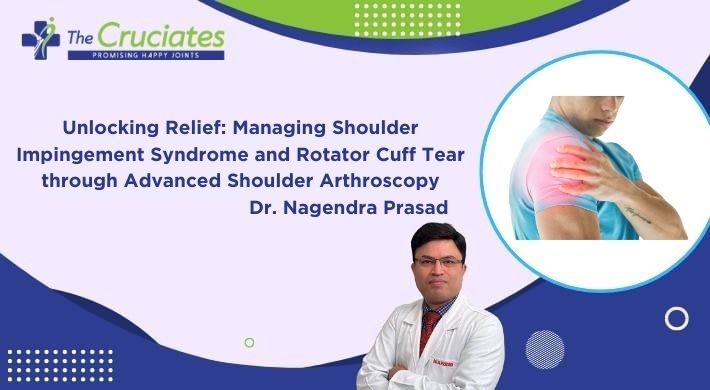Shoulder pain can be debilitating, affecting not only your daily activities but also your overall quality of life. Two common culprits responsible for such discomfort are Shoulder Impingement Syndrome and Rotator Cuff Tear. In this blog, we delve into the world of advanced medical solutions, specifically focusing on the role of shoulder arthroscopy in managing these conditions and highlighting why choosing the right surgeon is crucial for the best outcomes.
Understanding Shoulder Impingement Syndrome and Rotator Cuff Tear:
Shoulder Impingement Syndrome occurs when the rotator cuff tendons get pinched between the bones of the shoulder, leading to pain and inflammation. Rotator Cuff Tear, on the other hand, involves a partial or complete tear in the muscles and tendons that stabilize the shoulder joint. Both conditions can result from repetitive overhead activities, aging, or acute injuries.

The Significance of Shoulder Arthroscopy:
Shoulder arthroscopy has revolutionized the way we approach and treat these shoulder conditions. This minimally invasive surgical procedure involves making small incisions through which a tiny camera (arthroscope) is inserted, providing the surgeon with a clear view of the inside of the shoulder joint. This advanced technique offers several benefits over traditional open surgery, including reduced pain, quicker recovery, and minimal scarring.
The Role of the Best Shoulder Arthroscopic Surgeon:
Choosing the right surgeon for your shoulder arthroscopy is paramount to ensuring optimal results. A skilled and experienced shoulder arthroscopic surgeon can navigate the intricacies of the procedure with precision, addressing the specific issues causing your shoulder pain. When searching for the best shoulder arthroscopic surgeon, consider factors such as:
Expertise: Look for a surgeon specializing in shoulder arthroscopy with a proven track record of successful outcomes.
Experience: An experienced surgeon is more likely to have encountered a variety of cases, enabling them to tailor their approach to your unique situation.
Patient Reviews: Check patient testimonials and reviews to gauge the satisfaction of previous patients. Positive feedback can be a strong indicator of a surgeon’s competence.
Technology and Facilities: Ensure that the surgeon’s clinic is equipped with the latest technology and facilities for performing advanced shoulder arthroscopy.
The Shoulder Arthroscopy Process:
During the procedure, the surgeon uses the arthroscope to examine the inside of the shoulder joint. If an impingement or a rotator cuff tear is identified, the surgeon can then use small instruments to trim or repair damaged tissues. The minimally invasive nature of shoulder arthroscopy reduces trauma to surrounding tissues, leading to a faster recovery.

Postoperative Care and Rehabilitation:
Following shoulder arthroscopy, a comprehensive rehabilitation program is crucial for optimal recovery. Physical therapy plays a vital role in restoring strength and range of motion. Your surgeon will guide you through a personalized rehabilitation plan, ensuring a smooth and effective recovery process.
Conclusion:
For individuals grappling with the challenges of Shoulder Impingement Syndrome and Rotator Cuff Tear, shoulder arthroscopy presents a beacon of hope. By entrusting your care to the hands of the best shoulder arthroscopic surgeon, you take a significant step toward reclaiming a pain-free and active lifestyle. Don’t let shoulder pain hold you back; explore the possibilities of advanced shoulder arthroscopy for a brighter, more mobile future.
Remember, your journey to recovery begins with the right expertise. Choose wisely, and let the transformative power of shoulder arthroscopy pave the way to a healthier, more vibrant you.

